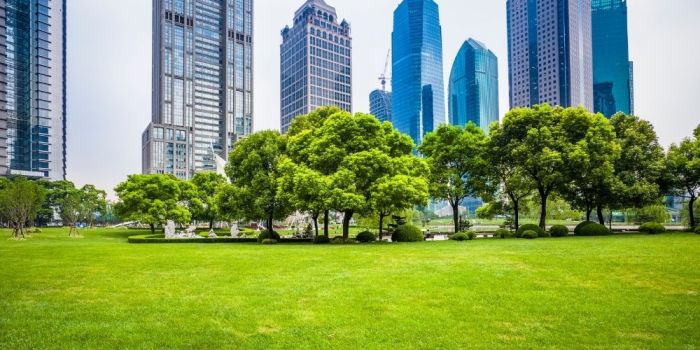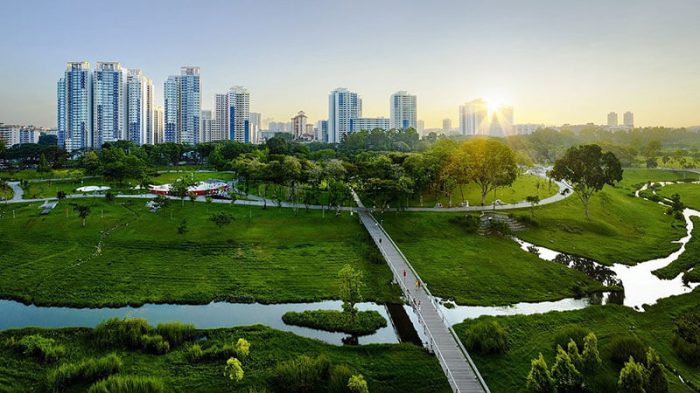
Eco-friendly city break destinations offer a unique opportunity to explore urban areas with a focus on sustainability. From eco-friendly accommodations to sustainable transportation options, these cities are paving the way for responsible travel choices. Let’s delve into the top 5 eco-friendly city break destinations and discover how you can make a positive impact while enjoying your vacation.
When it comes to planning your next city getaway, consider choosing destinations that prioritize environmental conservation and eco-tourism. By opting for eco-friendly city breaks, you not only reduce your carbon footprint but also support local initiatives that promote sustainability.
Eco-friendly city break destinations
When planning a city break, choosing an eco-friendly destination can make a positive impact on the environment. Here are the top 5 eco-friendly city break destinations around the world:
1. Copenhagen, Denmark
Copenhagen is known for its extensive bike lanes, commitment to renewable energy, and focus on sustainability in urban planning.
2. Portland, Oregon, USA
Portland is a leader in green initiatives with a strong emphasis on public transportation, local food sourcing, and recycling programs.
3. Reykjavik, Iceland
Reykjavik runs on geothermal energy, has a high recycling rate, and offers plenty of outdoor activities to connect with nature.
4. Vancouver, Canada
Vancouver prioritizes green spaces, has a strong focus on clean energy, and promotes eco-friendly transportation options.
5. Singapore
Singapore boasts impressive green architecture, extensive green spaces like Gardens by the Bay, and innovative sustainability practices.
Choosing eco-friendly destinations for city breaks helps reduce carbon footprint, supports local conservation efforts, and promotes sustainable tourism practices. By visiting these cities, travelers can experience a more environmentally conscious way of exploring urban areas.
Benefits of eco-friendly city breaks

Eco-friendly city breaks offer numerous benefits not only for travelers but also for the environment. By choosing sustainable accommodations, transportation, and activities, travelers can significantly reduce their carbon footprint and contribute to environmental conservation.
Contribution to Environmental Conservation
Eco-friendly city breaks help protect the environment by supporting businesses that prioritize sustainability. From eco-conscious hotels to locally-sourced dining options, these initiatives promote responsible tourism practices that minimize waste and energy consumption.
Comparison of Carbon Footprints
- Traditional city breaks often involve extensive air travel, which contributes significantly to carbon emissions. In contrast, eco-friendly city breaks encourage the use of public transportation, cycling, or walking, significantly reducing the overall carbon footprint of the trip.
- Choosing eco-friendly accommodations that implement energy-saving measures and waste reduction strategies further lowers the environmental impact of the city break.
Tips for Minimizing Environmental Impact
- Opt for eco-friendly accommodations that have green certifications or sustainable practices in place.
- Avoid single-use plastics by carrying a reusable water bottle and shopping bag.
- Support local businesses and artisans to promote sustainable tourism and reduce carbon emissions from imported goods.
- Choose walking tours or bike rentals to explore the city instead of relying on taxis or rental cars.
- Offset your carbon footprint by participating in tree-planting initiatives or supporting renewable energy projects during your city break.
Sustainable accommodations in eco-friendly cities: Eco-friendly City Break Destinations
In eco-friendly cities, sustainable accommodations play a crucial role in minimizing environmental impact and providing a green travel experience for environmentally conscious travelers.
Unique eco-friendly accommodations
In these destinations, travelers can find a range of unique eco-friendly accommodations, such as eco-hotels, green lodges, and sustainable resorts. These establishments are designed with a focus on reducing energy consumption, conserving water, and using environmentally friendly materials in their construction.
Green architecture in sustainable hotels
The concept of green architecture is prevalent in designing sustainable hotels in eco-friendly cities. These accommodations incorporate elements like passive solar design, green roofs, natural ventilation systems, and energy-efficient lighting to minimize their carbon footprint and promote eco-friendly practices.
Innovative eco-friendly features
Some innovative eco-friendly features found in sustainable accommodations include:
- Use of renewable energy sources such as solar panels and wind turbines to generate electricity.
- Water-saving technologies like low-flow showerheads, dual-flush toilets, and greywater recycling systems.
- Implementation of recycling and waste reduction programs to minimize the amount of waste sent to landfills.
- Incorporation of organic and locally sourced materials in furniture, linens, and amenities to support sustainable practices.
- Certifications such as LEED (Leadership in Energy and Environmental Design) to ensure the sustainability and eco-friendliness of the accommodation.
Transportation options in eco-friendly cities

When visiting eco-friendly cities, travelers have access to a variety of sustainable transportation options that help reduce carbon emissions and promote a greener environment.
Cycling
Many eco-friendly cities have invested in cycling infrastructure, making it easy for visitors to explore the city on two wheels. Cycling not only reduces carbon emissions but also promotes a healthy and active lifestyle.
Walking
Walking is another popular transportation option in eco-friendly cities, as it is emission-free and allows travelers to experience the city at a slower pace, appreciating the local culture and surroundings.
Electric Vehicles
Some eco-friendly cities have introduced electric vehicles for public transportation, reducing the dependency on fossil fuels and offering a sustainable alternative for getting around the city. Electric vehicles help decrease air pollution and noise levels in urban areas.
City Initiatives
- Implementing bike-sharing programs to encourage cycling among locals and tourists.
- Developing pedestrian-friendly zones and car-free areas to promote walking and reduce traffic congestion.
- Introducing electric buses and trams to provide eco-friendly public transportation options for residents and visitors.
- Offering incentives for the use of electric vehicles, such as charging stations and reduced parking fees for eco-friendly cars.
Local cuisine and sustainable dining

When exploring eco-friendly city break destinations, it is crucial to consider the impact of your dining choices on the environment. Supporting local, sustainable food options not only helps reduce carbon footprint but also promotes the local economy and culture.
Farm-to-table dining options
In eco-friendly cities, you can find a plethora of farm-to-table dining options where restaurants source their ingredients directly from local farms. By choosing these establishments, you can enjoy fresh, seasonal produce while supporting small-scale farmers and reducing the environmental impact of food transportation.
Organic food markets, Eco-friendly city break destinations
Many eco-friendly cities boast vibrant organic food markets where you can purchase locally grown, organic produce. These markets not only offer a wide variety of fresh fruits, vegetables, and other goods but also provide a direct connection between consumers and producers. By shopping at these markets, you can contribute to sustainable farming practices and enjoy delicious, healthy meals.
Promoting sustainability through culinary scene
The culinary scene in eco-friendly cities often prioritizes sustainability and environmental consciousness. Restaurants may implement practices such as composting food waste, using biodegradable packaging, or supporting ethical sourcing of ingredients. By dining at these establishments, you can experience delicious cuisine while knowing that your meal choices are contributing to a more sustainable future.
INTEREST RATES
Interest rates play a crucial role in the financial world, impacting both borrowing and saving money. These rates are essentially the cost of borrowing money or the return on investment for saving money. They can influence the overall economy, individual financial decisions, and the profitability of businesses.
Factors Influencing Interest Rates
Interest rates set by financial institutions are influenced by various factors, including:
- Economic conditions: The state of the economy, including inflation, unemployment, and GDP growth, can affect interest rates. Central banks may adjust rates to control inflation or stimulate economic growth.
- Government policies: Fiscal and monetary policies set by governments can impact interest rates. For example, changes in tax rates or government spending can influence the direction of interest rates.
- Market forces: Supply and demand for credit in the financial markets can also affect interest rates. If there is high demand for borrowing, interest rates may rise.
- Risk factors: The perceived risk associated with lending can influence interest rates. Lenders may charge higher rates for riskier loans to compensate for potential losses.
Impact of Interest Rate Changes
Changes in interest rates can have significant effects on individuals, businesses, and the overall economy:
- Individuals: Fluctuations in interest rates can impact the cost of borrowing for individuals, such as mortgage loans, auto loans, and credit cards. Higher rates can increase monthly payments, while lower rates can make borrowing more affordable.
- Businesses: Interest rates can affect the cost of capital for businesses. Higher rates may lead to increased borrowing costs, potentially reducing profitability. Lower rates can stimulate investment and growth in businesses.
- Economy: Interest rates influence consumer spending, investment, and overall economic activity. Central banks use interest rate changes to manage inflation and support economic stability.
In conclusion, Eco-friendly city break destinations offer a perfect blend of urban exploration and environmental consciousness. By choosing these sustainable travel spots, you can enjoy a guilt-free vacation while contributing to the preservation of our planet. So why not make your next city break an eco-friendly one?
FAQ Guide
How can I minimize my environmental impact while on a city break?
Opt for eco-friendly accommodations, use public transportation or walk, and support local sustainable dining options.
What are some examples of sustainable practices in eco-friendly cities?
Examples include green architecture in hotels, initiatives for eco-friendly transportation, and farm-to-table dining options.
Why is it important to choose eco-friendly destinations for city breaks?
Choosing eco-friendly destinations helps reduce carbon emissions, supports local sustainability efforts, and promotes responsible tourism.





